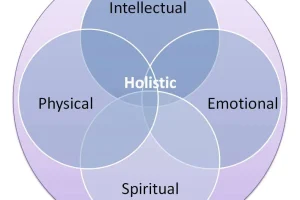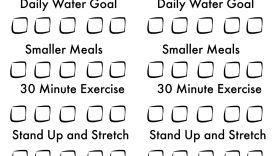Embracing a Holistic Approach to Healthy Living

The Importance of Holistic Health
Understanding Holistic Approach
The holistic health approach emphasizes the connection between the body, mind, and spirit. Rather than treating symptoms in isolation, it advocates for viewing individuals as complete beings. This perspective acknowledges that every aspect of a person’s life—physical, emotional, mental, and social—plays a crucial role in their overall health. For example, consider someone experiencing chronic headaches. A traditional approach might rely heavily on medication targeting the pain. In contrast, a holistic approach would investigate lifestyle factors contributing to the headaches, such as stress, diet, and sleep quality, crafting a comprehensive plan that may include dietary changes, stress management techniques, and exercise.
- Embracing a Holistic Approach to Healthy Living
- The Importance of Holistic Health
- Understanding Holistic Approach
- Benefits of Holistic Living
- Nurturing Physical Well-being
- Eating Nutrient-rich Foods
- Regular Exercise Routine
- Cultivating Mental Wellness
- Stress Management Techniques
- Mindfulness and Meditation
- Enhancing Emotional Balance
- Building Strong Relationships
- Practicing Self-care Activities
- Prioritizing Spiritual Growth
- Exploring Personal Beliefs
- Engaging in Spiritual Practices
Benefits of Holistic Living
Embracing holistic living can lead to a multitude of benefits that enhance one’s quality of life. Here are a few noteworthy advantages:
- Improved Physical Health: Holistic practices often encourage nutrition and physical activity, which contribute to better weight management and increased energy levels.
- Enhanced Mental Clarity: By addressing stress and emotional health, individuals can experience clearer thinking and improved decision-making abilities.
- Emotional Resilience: Engaging in holistic practices can help individuals develop coping mechanisms for emotional challenges, fostering resilience during tough times.
- Stronger Spiritual Connection: Partaking in spiritual practices can deepen one’s connection to self, community, and the universe, offering a sense of purpose and belonging.
Consider the story of Jenna, who transformed her life through holistic practices. After struggling with anxiety and fatigue, she started integrating yoga, meditation, and a balanced diet into her routine. Over time, she not only felt more energized but also discovered a profound sense of calm and purpose. In conclusion, the holistic health approach encourages individuals to seek balance and harmony in all aspects of their lives. By understanding and implementing holistic practices, one can embark on a transformative journey that fosters enhanced well-being and a deeper connection with oneself and others.
Nurturing Physical Well-being
Eating Nutrient-rich Foods
A cornerstone of nurturing physical well-being is a commitment to eating nutrient-rich foods. What we consume directly impacts our energy levels, mood, and overall health. Rather than focus on restrictive diets, the emphasis here is on incorporating a variety of foods that nourish the body. For instance, think of your plate as a canvas. Aim to fill it with vibrant colors that represent different food groups. Here are some examples of nutrient-rich options to consider:
- Fruits and Vegetables: Aim for at least five servings a day. Dark leafy greens, berries, and citrus fruits are packed with vitamins, minerals, and antioxidants.
- Whole Grains: Foods like quinoa, brown rice, and oats provide essential fiber and energy that help maintain steady blood sugar levels.
- Lean Proteins: Including sources like chicken, fish, legumes, and nuts can support muscle maintenance and repair.
Lisa, a busy professional, found that by prepping her meals on the weekend, she could ensure healthy choices during the workweek. She experimented with different recipes loaded with vegetables and whole grains, quickly noticing an increase in her energy levels and an improved mood.
Regular Exercise Routine
Alongside nourishing food, a regular exercise routine is vital for physical well-being. It’s not merely about hitting the gym; it’s about finding activities that are enjoyable and sustainable over the long term. Establishing a routine can be as straightforward as discovering physical activities that one genuinely enjoys. Here are some beneficial activities to consider:
- Cardio: Running, swimming, or dancing are great ways to get the heart pumping and improve cardiovascular health.
- Strength Training: Incorporating resistance exercises, such as weightlifting or bodyweight workouts, helps to build muscle mass and boost metabolism.
- Flexibility Practices: Yoga or Pilates can enhance flexibility, reduce stress, and improve posture.
Tom, an avid cyclist, started biking to work several times a week. Initially, it was challenging to adjust to this routine, but over time, he noticed significant increases in his stamina and a delightful rush from the fresh air and scenery. In summary, nurturing physical well-being can be achieved through a balanced, nutrient-rich diet and regular exercise routine. By prioritizing these foundational aspects, individuals can cultivate a healthier and more energetic lifestyle.
Cultivating Mental Wellness
Stress Management Techniques
Transitioning from physical well-being, an equally important aspect to consider is mental wellness. One of the biggest challenges many face is stress, which can affect not only mental health but also physical health. Therefore, implementing effective stress management techniques is crucial. There’s a wide variety of techniques available, and it’s worth experimenting to find what resonates best with you. Here are a few effective methods:
- Deep Breathing Exercises: Spend a few minutes focusing on your breath, inhaling deeply through your nose and exhaling slowly through your mouth. This practice can quickly reduce feelings of anxiety.
- Time Management: Organizing your tasks and setting realistic deadlines can help prevent feeling overwhelmed. Utilize planners or apps to break down larger projects into manageable steps.
- Physical Activity: Engaging in regular physical activity is not just good for the body; it releases endorphins that enhance mood and reduce stress.
Sarah, a graduate student, encountered a mountain of deadlines that led to overwhelming stress. By creating a schedule and incorporating short breaks for deep breathing exercises, she found that she could manage her workload better and maintain her mental clarity.
Mindfulness and Meditation
Another powerful approach to cultivating mental wellness involves mindfulness and meditation practices. These techniques emphasize being present in the moment, which can significantly alleviate stress and anxiety. Mindfulness encourages individuals to focus on their current experiences—sights, sounds, and feelings—without judgment. This can be as simple as taking a walk and fully engaging with your surroundings. Meditation, on the other hand, allows for a deeper state of relaxation and introspection. Here’s how to get started:
- Begin with Simple Guided Meditations: Apps like Headspace or Calm offer excellent resources for beginners.
- Set Aside Time Daily: Even just five to ten minutes of meditation can begin to increase mental clarity and emotional balance.
- Practice Gratitude: Incorporate a daily gratitude practice by writing down three things you’re grateful for, which helps shift focus from stressors to positives.
Mark, a busy professional, started meditating for just five minutes each morning. Over time, he noticed a profound shift in his mindset, where challenges became more manageable and he approached his day with a sense of calm. In conclusion, cultivating mental wellness through effective stress management techniques and mindfulness practices is essential for overall health. By prioritizing mental wellness, individuals can navigate the complexities of life with greater ease and resilience.
Enhancing Emotional Balance
Building Strong Relationships
Continuing from the conversation on mental wellness, enhancing emotional balance is crucial for overall happiness and fulfillment. At the heart of emotional balance lies the importance of building strong relationships. Connecting with others provides a support system that can help us navigate life’s ups and downs. Strong relationships are the bedrock of emotional well-being. Here are some tips to cultivate and maintain these vital connections:
- Communicate Openly: Sharing thoughts and feelings honestly can strengthen bonds and foster understanding. Regular check-ins with loved ones can make all the difference.
- Prioritize Quality Time: Whether it’s a weekly dinner with family or a casual coffee catch-up with a friend, spending dedicated time together strengthens relationships and creates lasting memories.
- Be Supportive: Show up for others during their tough times. Simple acts like listening or offering help can reinforce trust and affection.
For instance, Jess noticed that her friendships began to falter as everyone got busy with life. She initiated a monthly “friendship night” where they could reconnect over games and laughter. This not only boosted their spirits but also reinforced their bonds.
Practicing Self-care Activities
Alongside nurturing relationships, practicing self-care activities is essential for maintaining emotional balance. Self-care isn’t selfish—it’s a necessary component of a healthy lifestyle that empowers individuals to recharge and rejuvenate. Consider integrating these self-care practices into your routine:
- Engage in Hobbies: Whether it’s painting, gardening, or playing a musical instrument, dedicating time to what you love can boost your mood and ignite creativity.
- Set Boundaries: Learning to say no is crucial for protecting your mental space. Acknowledging your limits prevents feelings of overwhelm.
- Mindful Rest: Ensuring adequate sleep and rest is paramount. Create a bedtime routine that promotes relaxation, such as reading, gentle stretching, or herbal tea.
For example, David found himself burned out from work and family responsibilities. He decided to dedicate Sunday afternoons to self-care activities, including hiking and journaling. This time allowed him to reconnect with himself and return to his responsibilities with renewed energy. In summary, enhancing emotional balance through building strong relationships and practicing self-care activities is vital for holistic well-being. By investing in our connections and prioritizing self-nurturing practices, we can cultivate a happier and more balanced emotional landscape.
Prioritizing Spiritual Growth
Exploring Personal Beliefs
Building on the themes of emotional balance, prioritizing spiritual growth is another significant aspect of overall wellness. Spirituality provides a framework for understanding the world and our place within it. Exploring personal beliefs can be a transformative journey, inviting individuals to reflect on what truly matters to them. Understanding one’s own beliefs often requires self-exploration. Here are some steps to embark on this enriching journey:
- Reflect on Values: Take time to consider what principles guide your life. Are they rooted in family, kindness, integrity, or something else? Write them down and revisit them often.
- Read and Learn: Explore different philosophies, religions, or spiritual teachings. Books, podcasts, and documentaries are great avenues for discovering new ideas and perspectives.
- Ask Questions: Don’t hesitate to question your beliefs. Engaging in discussions with others or journaling your thoughts can provide clarity and expand your understanding.
Take Anna, for instance, who felt lost in her day-to-day routine. She began engaging with various philosophical texts and found herself drawn to mindfulness and gratitude teachings. This exploration helped her redefine her purpose and integrate greater meaning into her life.
Engaging in Spiritual Practices
Alongside exploring beliefs, actively engaging in spiritual practices can deepen one’s journey. These practices allow individuals to connect with their spirituality on a more profound level and can take many forms, depending on personal preferences. Here are a few ideas to consider:
- Meditation and Prayer: Regularly setting aside quiet time for meditation or prayer can foster a sense of peace and connection to something greater.
- Nature Walks: Spending time in nature can be a spiritual practice in itself. Observing the beauty around you can evoke feelings of gratitude and connection.
- Community Involvement: Volunteering for causes that resonate with your values can enhance your sense of purpose while connecting you with like-minded individuals.
For example, Paul discovered the joy of community service when he began volunteering at a local shelter. Not only did it deepen his sense of gratitude, but it also helped him form meaningful relationships with others who shared his values. In conclusion, prioritizing spiritual growth through exploring personal beliefs and engaging in spiritual practices can significantly enrich one’s life. By committing to this journey, individuals can uncover deeper meanings, foster connections with others, and ultimately lead a more fulfilling life.





